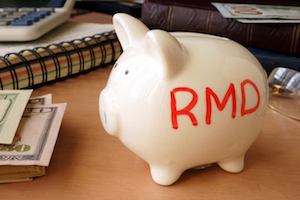Practice Management
 The rules for required minimum distributions (RMDs) apply to a variety of retirement plans and accounts and their participants and holders. Some are the same for IRAs and defined contribution plans, but they are not all the same. Following is a look at the differences and the similarities.
The rules for required minimum distributions (RMDs) apply to a variety of retirement plans and accounts and their participants and holders. Some are the same for IRAs and defined contribution plans, but they are not all the same. Following is a look at the differences and the similarities.Differences
Following are the differences in the RMD rules for IRAs, including SEPS, SARSEPs and SIMPLEs, and the RMD rules for DC plans.
Date for Taking First RMD
- IRAs, including SEPS, SARSEPs and SIMPLEs: Must be taken by April 1 of the year that follows that in which a participant attains age 72 (70½ for those who reached age 70½ before Jan. 1, 2020, regardless of whether one is still employed.
- DC plans: April 1 of the year following the later of: (1) the year a participant attains age 72 (or age 70½ before Jan. 1, 2020), or (2) the year a participant retires (depending on the plan terms). If one is a 5% owner, April 1 of the year following the that in which the 5% owner attains age 72 (or age 70½ before Jan. 1, 2020).
Taking the RMD if One Has Multiple Accounts
- IRAs, including SEPS, SARSEPs and SIMPLEs: If one has more than one IRA, one must calculate the RMD for each IRA separately each year. However, one may aggregate the RMD amounts for all of one’s IRAs and withdraw the total from one IRA or a portion from each of the IRAs. One does not have to take a separate RMD from each IRA.
- Defined contribution plans: If one has more than one DC plan, you must calculate and satisfy your RMDs separately for each plan and withdraw that amount from that plan. However, there is one exception: If one has more than one 403(b) tax-sheltered annuity account, one can total the RMDs and then take them from any one (or more) of the tax-sheltered annuities.
No Difference
Following are the considerations for which the RMD rules for IRAs, including SEPS, SARSEPs and SIMPLEs, and the rules for DC plans are the same.
When One Attains Age 70½ for Purposes of the RMD Rules
On the date that is six months after the participant attains age 70. However, there is a difference depending on whether one reaches age 70 before or after July 1, 2019:
- If one attained age 70 on June 30, 2019, he or she attains age 70½ on Dec. 30, 2019, and must take the first RMD by April 1, 2020.
- If one attained age 70 on July 1, 2019, he or she attains age 70½ on Jan. 1, 2020, and must take the first RMD by April 1, 2022, the April 1 of the year after the participant attains age 72.
Deadline for Taking Subsequent RMDs After the First
After the first RMD, a participant must take subsequent RMDs by Dec. 31 of each year beginning with the calendar year containing his or her required beginning date. For example, if one attains age 70½ on July 15, 2019, he or she must take the first RMD, for 2019, by April 1, 2020; the second RMD, for 2020, by Dec. 31, 2020; and the third RMD, for 2021, by Dec. 31, 2021.
Withdrawing More than the RMD
An IRA owner/participant can withdraw more than the RMD. One cannot apply excess withdrawals toward future years’ RMDs.
Taking More than One Withdrawal in a Year to Meet the RMD Requirement
One may withdraw the RMD in any number of distributions throughout the year, as long as one withdraws the total annual minimum amount by Dec. 31, or April 1, if it is for the first RMD.
Consequences if an RMD Is Not Taken
If the distributions in any year are less than the RMD for that year, one is subject to an additional tax equal to 50% of the undistributed RMD.
- Log in to post comments
